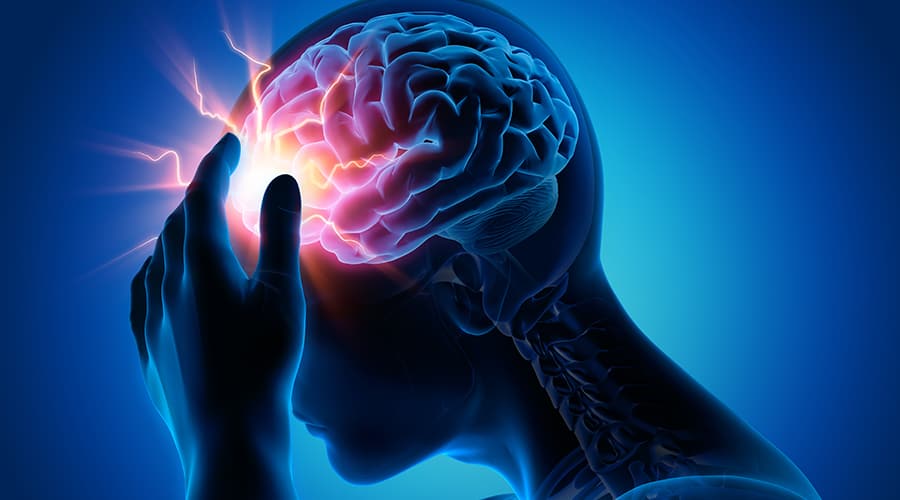
Learn about a key to proper concussion treatment
All the education and prevention methods we’ve read and learned cannot change one simple fact: concussions and head injuries are an unfortunate part of sports. With competitive athletes moving and sometimes colliding at high rates of speed, there’s really no way to completely eradicate the possibility of a head injury.
But once an injury is sustained, the focus often turns to when – if at all – the athlete can safely return to play. Some doctors look for a certain number of symptom-free days, while others slowly reintroduce the player to practice drills before they ever take part in a game.
Another popular method, often overlooked in the non-healthcare community, is the baseline test, which allows for a means of screening for concussion symptoms before an injury even occurs. Ideally performed in a sport’s preseason, a trained healthcare professional conducts numerous tests to assess the athlete’s physical balance and brain function (This may include learning and memory skills, ability to think quickly, solve problems, pay attention and concentrate.)
Once the test is completed, the physician or athletic trainer keeps the results on file for easy comparison. Should the athlete sustain an injury during the season, a similar exam can be conducted with results compared to the baseline. If the two results are within a certain range of one another, it’s a good sign that the athlete’s cognitive and relevant physical faculties are normal, allowing for a return to play.
Ideally, these tests will take place prior to the season’s first practice. Experts note that many baseline assessment tools only show effectiveness in athletes ages 10 and older.
Cognitive deterioration is one of the last symptoms to disappear following a concussion, but is a strong indicator the brain injury persists. This is one more argument in favor of baseline testing, as a positive result on cognitive tests is a particularly encouraging signal of recovery.
They won’t prevent concussions from happening, but baseline testing allows healthcare professionals and coaches a useful tool in monitoring and assessing concussion symptoms and preventing a premature return to play.
Elements of Testing
At a minimum, baseline testing includes a check for any currently present concussion symptoms before performing balance and cognitive assessments. These tests may be computerized, taken with paper and pencil, or a combination of the two. The end-goal is an overall assessment of the athlete’s memory, ability to concentrate, and reaction time.
Also included should be an assessment for prior concussion (when the injury occurred, how did it occur, how long did the symptoms persist, etc. The healthcare professional will also want to record any conditions such as anxiety, depression, history of migraines, mood disorders that may affect testing, as well as recording any learning disabilities and whether there is a presence of Attention Deficit Disorder.
Once the exam is conducted, the results can be recorded and interpreted by any healthcare professional with a history of experience in concussion management. According to the CDC, a neuropsychologist is the ideal person to interpret the computerized or written aspects of the exam. The CDC also cautions that these results should not be used alone, but rather as one essential component of a return-to-play protocol.
Ideally, the exam should be conducted at the beginning of each sport’s season (for multi-sport athletes, this can be used as an effective means of confirming no injuries in a prior sport, or assuring that all symptoms of any head injury have cleared.) At minimum, the tests are to be performed once per year.
Concussions in the News
The country of Scotland recently made news in the world on treatment of head injury when they became the first European nation to ban children under the age of 12 from heading a soccer ball during competition.
This follows the lead of the United States Soccer Federation, who in 2015 prohibited the heading of the ball by players ages 10 and under.
According to Forbes, the decision was based on findings from a November report entitled “Neurodegenerative Disease Mortality among Former Professional Soccer Players” published in the New England Journal of Medicine. The study’s most notable finding was that former Scottish professional soccer players had a higher mortality rate from neurodegenerative disease. It also found that anti-dementia medications were being prescribed more often to retired soccer players than they were to the general population.
The National Football League made news as well, after a season of enforcement of rules to prevent unnecessary contact to include tackling with the crown of the helmet. Carolina Panther linebacker Luke Kuechly, age 28, retired from the game after only eight seasons. While concussions weren’t Kuechly’s stated reason for hanging up his cleats, he did miss seven games due to head injuries between 2015 and 2017.
“Since I was a little kid, there’s only been one way to play this game – fast, physical, and strong,” said Kuechly. “At this point, I don’t know that I’m able to do that anymore.”
Kuechly is just the latest star player to retire at an age some might consider premature, joining the Indianapolis Colts’ Andrew Luck, New England Patriots’ Rob Gronkowski, and Calvin Johnson of the Detroit Lions as players who retired at or before age 30 in recent years due at least in part to injury considerations.
Finally, the NFL’s chief medical officer, Dr. Allen Sills, referred to Philadelphia Eagles quarterback Carson Wentz’s decision to remove himself from a playoff game after experiencing concussion symptoms as ‘heroic.’
“Having a concussion and playing through it is not about toughness,” said Dr. Sills. “That’s demonstrating a lack of understanding of the severity of the injury. So I applaud Carson Wentz for understanding how serious this injury is and for getting appropriate care that he needs.”
SOURCES: CDC, Forbes, Associated Press






